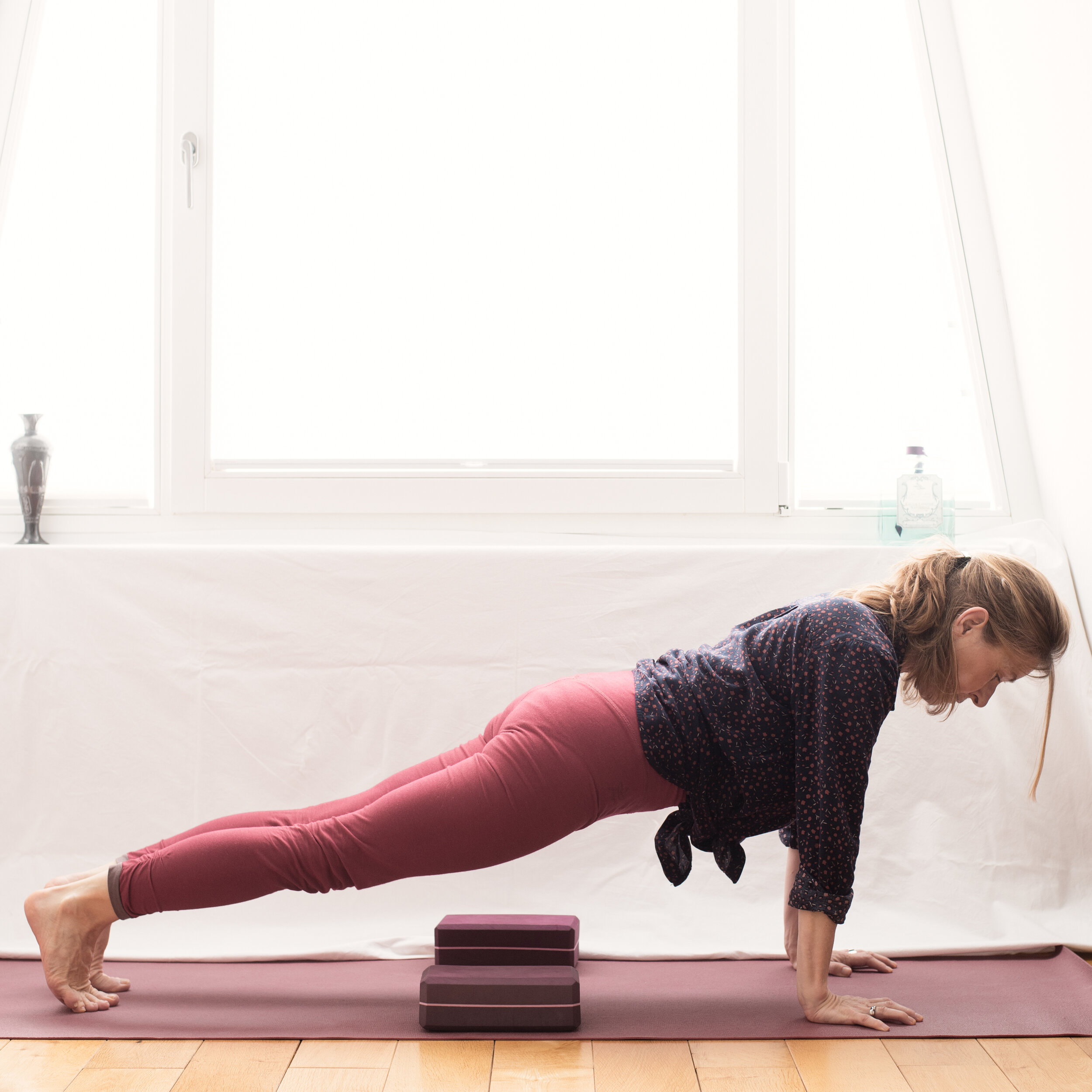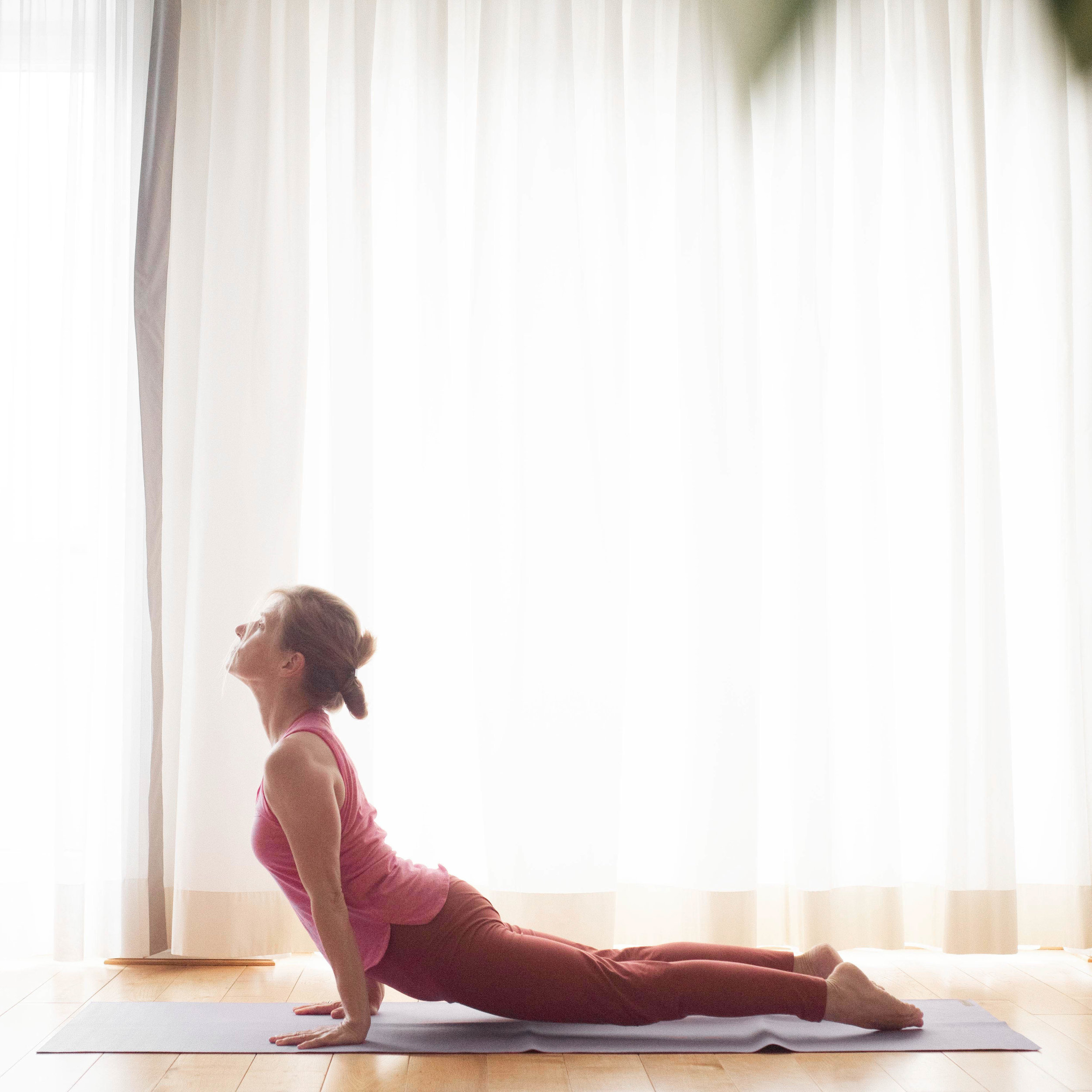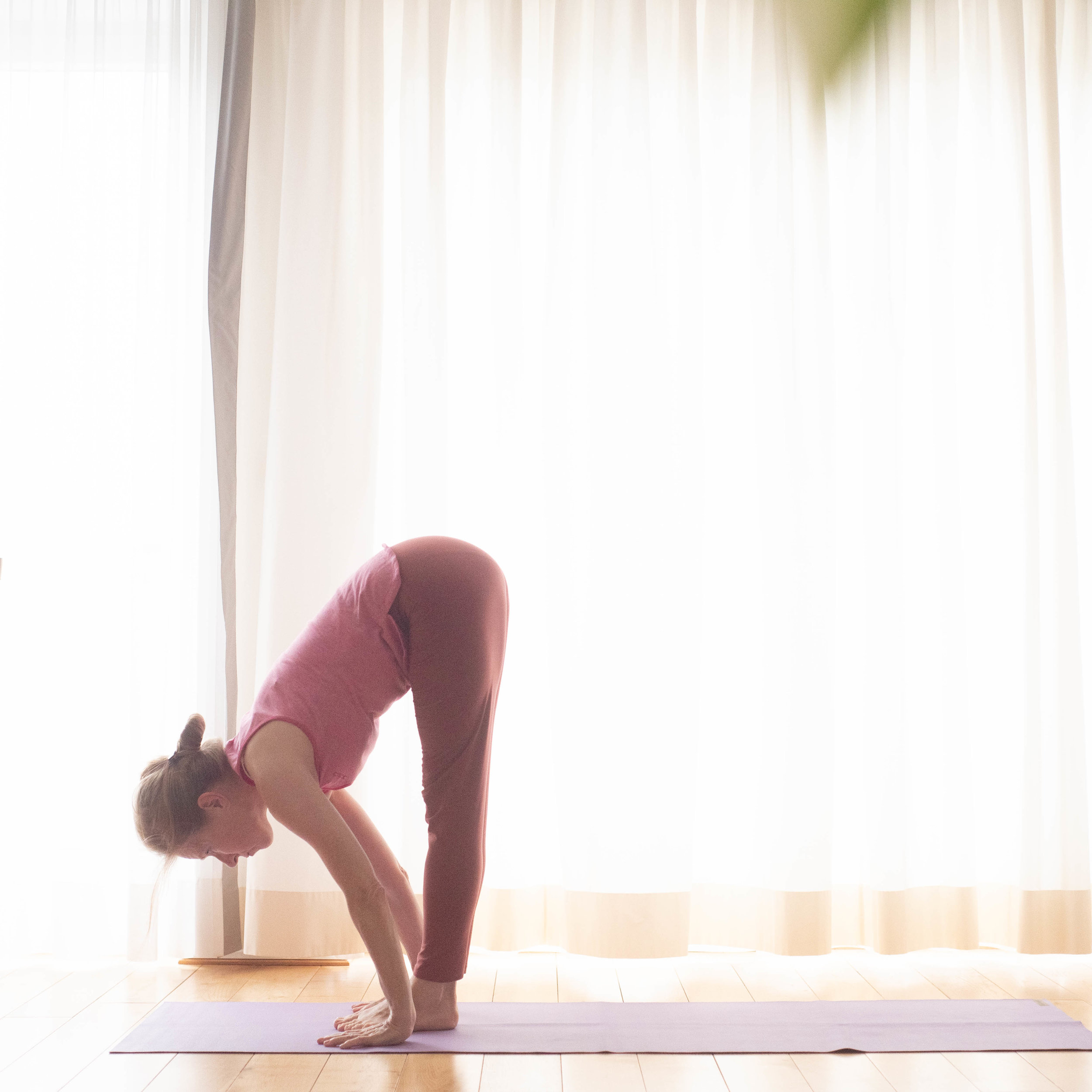What is vinyasa?
It can be confusing how this word is used. In fact it has two meanings:
Vinyasa means transition. We move the body from a body posture to the next. This transition is a vinyasa. There are different vinyasa of different difficulties.
Vinyasa means also stage. One can read in the book ‘Yoga Mala’ by P. Jois: ‘The 6th vinyasa is ‘adho mukha svanasana’. When practicing sun salutation adho mukha svanasana (upward facing dog) is the 6th asana. It is held for 5 breaths.
Most of the time we mean transition, when we talk about vinyasa. Vinyasa is not only about jumping forward and backwar. Chakrasana is a vinyasa as well. There are many many other transitions, easy ones and demanding ones.
The breath determines how fast we move from one asana to the next. Inhaling and exhaling is supposed to be equally long. Sometimes a quick movement shall be done when inhaling or exhaling. Sometimes a rather complex movement is supposed to be done. The breaths remain equal. The movements adjust.
Important is to inhale fully and to exhale fully. Take your time.
It’s also important not to stop to early with the movement. This is a common mistake, but understandable. I think it’s better to take 2 extra breaths than to hurry to the next stage.
Breathing superficially and exercising all the vinyasa (stages) sloppily reduce the positive effects of this practice.
An example: After a deep forward bending asanas like supta kurmasana it can be difficult to get into urdhva mukha svanasana. To practice this stage sloppily means also that the effect is reduce. This back bend shall balance the body again. It can be useful to hold this stage a bit longer to allow the body to adjust to this position slowly.
In Ashtanga yoga we have the transitions and we have the asanas that is held for 5 breaths. it used to be 8 breaths, which would make more sense. I even recommend holding the difficult asanas up to one minute.
One breath means inhaling and exhaling. To get into an even rhythm I started counting again: one (inhale) and (exhale), pause, two (inhale) and (exhale, pause, three (inhale) and (exhale)…..
The word in bracket only describes what is done during the counting.
The first vinyasa (vinyasa) that is learned when practicing Ashtanga yoga is to get into an asana with one breath. This can be rather challenging. I’ll write more about this in my next blog post.
Picture:
Vinyasa as transition: It’s the movement from pic 1 to pic 2 to pic 3 to pic 4.
Vinyasa as stage: You can see part of the sun salutations. The 6th vinyasa is downward facing dog. It is held for 5 breaths.









